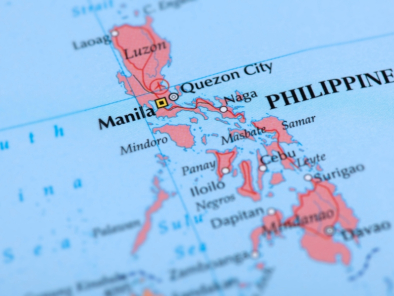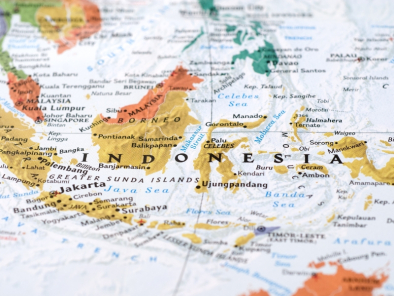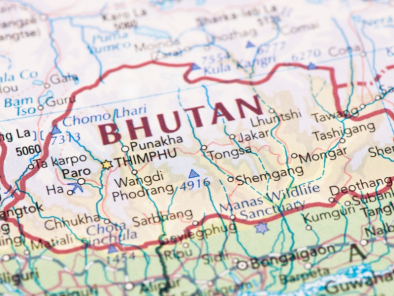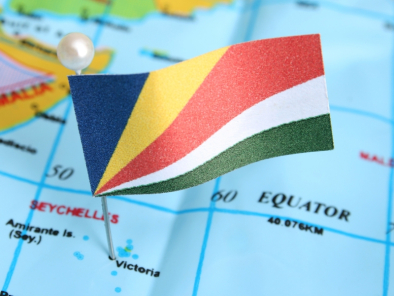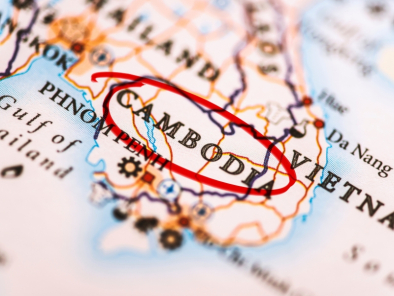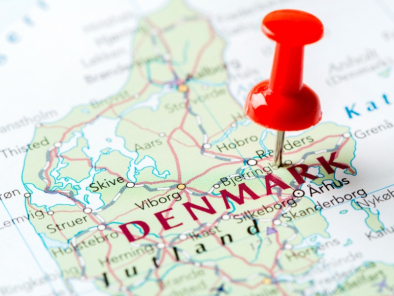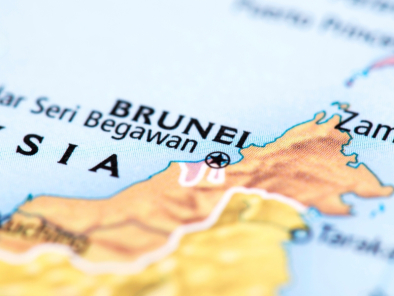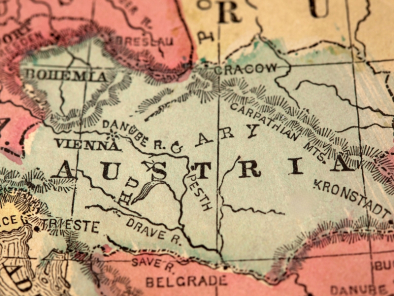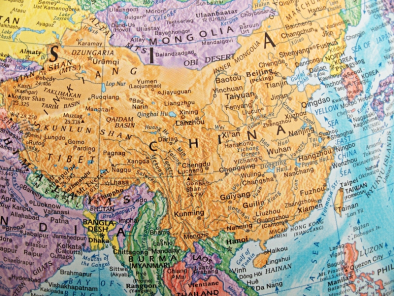TRAVEL TIPS
FOR PHILIPPINES
Philippines are an archipelago
of over 7,000 islands offers an extraordinary array of breathtaking natural
scenery.
VISA The visa is to be obtained prior to arrival in the country
TIME:
Philippines is 2 ½ hrs ahead of
Indian Standard Time.
GETTING THERE:
There
are no direct flights to Manila from India, however, there are indirect flight to Manila such as Cathay
Pacific, Malaysian Airlines, Singapore Airlines and Thai Airways..
GETTING AROUND:
In
a country that is made up of over 7,100 islands and islets, travel has a lot to
do with transportation. Rest assured that options are endless for getting
around, some typical and others quite unique.
By Air
Manila, Cebu, Davao,
Clark, Subic, and Laoag are the international gateways, with the Ninoy Aquino
International Airport (NAIA) in Manila
as the premier gateway. It is served by more than 30 airlines, which fly to
different cities around the world. The Mactan International Airport (MIA) in
Cebu handles regular flights from Japan,
Singapore, and Australia as well as chartered flights from Hong
Kong, the United States,
and other major travel capitals. Davao
International Airport
handles regular flights from Indonesia
and Singapore.
The Diosdado Macapagal
International Airport
and Subic Airfield in Central Luzon service
both chartered and cargo planes. Laoag
International Airport
in Ilocos Norte services regular flights from Taiwan
and Macau.
Philippine
Airlines (PAL), the national flag carrier and considered “Asia’s
First Airline,” remains the country’s biggest airline company. It has the
largest number of international flights to the Philippines as well as domestic
flights. PAL links Manila to 14 cities in 8
countries, and flies regularly to 41 domestic destinations outside Manila.
Cebu
Pacific Air (5J), the low fare leader in the Philippines, is the country's
leading domestic airline with the lowest year-round fares, most number of
destinations, most number of routes, most number of flights, most number of
passengers flown in its domestic network and newest fleet of brand new Airbus
A320s, Airbus A319s and ATR 72-100s. It links Manila
to 21 domestic destinations and the Philippines to 12 international
destinations with its direct flights. It also makes its international and
domestic destinations virtually accessible to each other through its extensive
connecting flight network. The airline currently operates hubs in Manila, Cebu, Davao and
soon, in Clark.
Other
airlines that presently fly the Philippine skies are Air Philippines,
South East Asian Airlines, Laoag International Airlines, Asian Spirit Airlines,
and Pacific Airways – each serving popular tourist destinations at pocket-easy
prices. For a more personal experience, chartered flights are available via small
air companies such as Airspan Corporation (helicopters), A. Soriano Aviation,
and Aerolift Philippines
(small-to-medium-sized planes).
By Sea
As
the islands of the Philippines
are separated by different bodies of water, the sea plays an integral part in
travel. A range of seafarers are available, from huge cargo ships to small
ferry boats; take long trips that last for a day or two with regular ship lines
or take shorter ones with ferries. Major cruise liners call on the port of Manila.
WG&A
Lines, a partnership between William Lines and the Aboitiz Group, has launched
its SuperFerry Program, an affordable but convenient alternative to the usually
crowded vessels of other ship lines.
By Land
Moving
around the country by land is easy with national highways connecting the major
islands and an extensive public transportation sytem, which includes the exotic
Philippine jeepney. Trains, taxis, buses, jeepneys, and trikes are the main
modes of public transportation. The calesa, a more elegant means of traveling
in most major cities, is more commonly offered as a “fun ride” in many public
parks across the country.
A
land railway system operated by the Philippine National Railways, called the
Metrotren, is recommended for long distance traveling. It reaches as far south
as Carmona and Cavite,
or as far north as Meycauayan, Bulacan. Within Metro Manila, the Light Railway
Transit (LRT), which stretches from Caloocan
to Baclaran, provides a fast alternative from the regular jeepney. The Metro
Railway Transit (MRT) traverses the length of EDSA and connects North Avenue in Quezon City to Taft
Avenue in Pasay
City, passing through the major
arteries of Makati's
financial district.
Taxis
provide the best means of transportation around the city, with a flag-down fare
of PhP20 on the meter. For the steel-hearted, buses also tread the roads. A
vast majority of city buses travel via Epifanio delos Santo Avenue (EDSA) while
provincial bus lines have put up various terminals all across the country. The
best means of short distance travel is the trike: the motorized version is
called a tricycle, and the pedal-powered one is called a pedicab. Trike
terminals are often found near a “palengke” or marketplace.
The
undisputed “King of the Philippine Roads” is the jeepney. Since it first
emerged after the Japanese occupation of the Philippines, it has become a
fixture in roads all over the country – so much so that it is now considered a
symbol of national pride. Jeepneys are adorned with colorful designs that
distinguish them from one another, with themes ranging from the serious to the
outright silly, but all uniquely Filipino.
CLIMATE
March
to May is hot and dry. June to October is rainy, November to February is cool.
Average temperatures: 25°C to 32°C; humidity is 77%.
LANGUAGES
Two
official languages --- Filipino and English. Filipino which is based on
Tagalog, is the national language. English is also widely used and is the
medium of instruction in higher education.
ELECTRICITY
220
volts A/C is the common standard. 110 volts A/C is also used, especially in
major hotels.
CURRENCY
The
Philippines'
monetary unit is the peso, divided into 100 centavos. Foreign currency may be
exchanged at any hotels, most large department stores, banks, and authorized
money changing shops accredited by the Central Bank of the Philippines.
MAJOR SIGHTSEEING PLACES IN PHILIPPINES:
MANILA
The
Philippines
capital, though noisy and brash, has hidden charms that often surprise
travellers who take the time to explore the metropolis. A curious mixture of
old and new, Manila is a city of several parts
and the closest Philippines
gets to a cosmopolitan city.
•The
business and corporate centre of Metro Manila is called Makati. This is where can be found the
headquarters of multinational companies, the banks, the embassies and all the
big names in business. The deluxe hotels here are all convenient to the main
business and shopping areas.
•There
is a second business area, which is farther north of Makati. This area may also come up with your
corporate clients as located here are the Asian Development Bank, the
Philippine Stock Exchange, the Centre for Research and Communication as well as
some multinationals and banks. This area is called Ortigas, which is the name
of its main street. Some people may refer to it as Mandaluyong.
To and from the airport
Manila Ninoy Aquino
International Airport
is located some 7km south of the city centre. The easiest way into the city is
to take a cab. Once you've cleared customs you'll find plenty of taxi desks
where you can pay a flat fare for a trip into the city (around PHP500 depending
on exact destination). You'll be given a ticket, redeemable at the taxi desk
outside. Failing that, you can catch an independent cab from outside, but
unless you're really good at negotiating you're going to be ripped off. Owing
to traffic congestion expect the journey to take at least 30 minutes even at
relatively quiet times of day.
Jeepneys
will take you to the nearest Light Rail station at Baclaran, from where you can
catch the elevated railway into the city centre. A jeepney fare shouldn't be
more than PHP10, usually depending on how many people are around. A single
ticket on the Metro Rail costs PHP12 to central stations such as Pedro Gil in
Malate or UN Avenue
in Ermita.
GETTING AROUND
Light and Metro Rail
Manila's modern public
transport network comprises of the elevated rail network that snakes across the
city. It consists of two distinct lines, the LRT running from north to south
across the city with stations at all principal points in between, and the MRT,
which runs the length of the city. The Light Rail network costs PHP12 per ride,
while the more modern MRT costs PHP10-15 depending on the destination. You have
to pay the fare for the other line if you interchange from a different journey.
It's worth purchasing the Flash Pass Card which allows multiple rides on all
metro lines. It costs PHP250 and can be used for a week.
Bus
Buses
are operated by numerous private companies throughout the Manila Metro area. They
come in various colours and sizes, but are generally run down and crowded.
Competition is also fierce. The flip-side is that they're extremely cheap, you
should only pay PHP1 for a short hop, although you might be asked for more.
Destinations are usually printed in English on signs that the conductor will
hold up at stops, or shout at as the bus nears.
More
salubrious-looking buses do run to scheduled routes around the city, but at
PHP10 per trip, if your destination is anywhere near the Metro Rail station,
you're better off getting the train.
Taxi
Taxis
are abundant but it's recommended that you familiarise the route before leaving
your hotel or pension house. Available at bookstores and newsstands is a
relatively easy-to-understand map called EZ Map. It's a good idea to memorise
street names: this is your safeguard against unscrupulous taxi drivers who try
and extend the trip for added revenue. Flag down rate is PHP25 (USD0.50) plus
PHP2 for every 100 metres. Taxi drivers don't give change.
Colourful
jeepneys (refurbished American army jeeps) are abundant in Manila. This is the common man's vehicle of
choice. Check for routes with a local. If you get lost, ask directions from
traffic enforcers or shop owners. Jeepney fares are typically PHP4-5 one way,
although as a tourist you may be asked for up to twice as much. Jeepneys have
their destination painted on them, but it can be hard to decipher so it might
be advisable to ask. If you want to catch one, wave your hand and it will pull
over. You climb in the back, and, if crowded, hand your money along to the
front. To make the driver stop shout out "para" and the jeepney will
pull in, although make sure you're ready to disembark rapidly, as jeepneys
hardly ever come to a complete stop.
MUST SEES
Intramuros
Once
the political and economic centre of the city during the Spanish regime
(1571-1898), the walled city of Intramuros
has been refurbished and converted. It now stands as a refined old town filled
with entertainment and attractions. Old prison chambers intact with iron
railings are now occupied by restaurants, bars, art galleries and souvenir
shops.
Horse-drawn
carriages with cocheros (coachmen) well-versed in the city's history can easily
be contracted for quick tours. Just PHP250 (or around USD5) will buy you an
hour's worth of moving from one historic spot to another, passing ramparts,
museums and churches as well as lush gardens, warehouses and even torture
chambers.
Most
poignant is the memorial marking the death of 10,000 non-combatants (women and
children) during the bombing of Manila
in World War Two. You should make the effort to see the unique baroque San
Agustin Church and its small museum as well as Fort Santiago.

Fort
Santiago
It's
the most fascinating relic in the Intramuros and a must-see. This fort was
built over 400 years ago and has had a role to play in almost every significant
event since then. It was originally the home of the last Filipino king before
the Spanish usurpers invaded, replacing the wooden structure with a stone
stronghold at the mouth of the river. The British used it during their
occupancy and in 1896 the Spanish incarcerated José Rizal here. At the park's
centre is a small shrine to the revolutionary, which contains some of his
relics and samples of his writing. Footsteps on the floor around the garden
allow you re-enact Rizal's final steps to "martyrdom".
The
fort was most notoriously used as a wartime prison by the Japanese, and
according to some of the more gruesome stories American soldiers and Filipino
guerillas were tortured and executed here. Plaques mark mass graves where
hundreds of bodies were found following the war. Interestingly the fort was
also one of hundreds of sites on the islands where the Japanese hid their war
wealth, huge amounts of gold bullion valued at billions of dollars.
Rizal
Park
Rizal Park is the city's largest open
space, and is a pleasant place to stroll. There isn't a great deal to do here
except relax among the formal gardens - the Japanese and Chinese gardens are
particularly beautiful - and idle away the day. Locals flock here on the
weekend, and on Sundays there is usually some form of entertainment, either
impromptu music from buskers or scheduled concerts at the park's auditorium.
The park is named after the Filipino revolutionary hero Dr José Rizal, who was
executed here by the Spanish in 1896. The bronze statue in the middle of the
park is of him. If you come here early in the morning you'll find locals going
through their Tai Chi routines.
Corregidor
Island
Right
at the entrance of Manila Bay is tiny Corregidor Island
where joint Filipino and American forces made their last stand against the
invading Japanese Imperial Army during the second World War. On the island you
can still see the gigantic sea-facing guns and the barracks. Here also, it's
rumoured, that war treasure was buried but most people view the island as a war
grave. The memorials are a poignant reminder of the bravery shown by people on
all sides and the fallen.
A
typical tour will look at the gun positions and the Malinta tunnel network,
where general MacArthur's headquarters stood against Japanese bombardment.
Elsewhere on the island you can see relics of Spanish colonial rule although
much of it's overgrown and left to the jungle. A population of bold-as-brass
monkeys now inhabit the place and have no inhibitions when it comes to
approaching visitors.
The
island is an hour and a half from Manila
Bay on ferry from the
pier at the Cultural Centre (Roxas
Boulevard). Sun Cruises operates guided tours of
the islands, including ferry transfers. A day-tour starts from PHP1,690
approximately.
CEBU
In
the Visayas group, the first island to be colonised by the Spaniards is also
home to the oldest city in the country, Cebu
City, and acts as the gateway to the
Central and Southern Philippines.
GETTING THERE:
To and from the airport
Cebu International Airport is situated on Mactan Island,
approximately 15km east of the city, just outside Lapu-Lapu City
(the main town on Mactan).
By Bus
There
is no scheduled bus service to the city, although some of the hotels will
provide complimentary shuttle services for arriving passengers - ask when you
make your booking.
By Taxis
Taxis
are available either from the counters in the arrivals hall or from the rank
outside. If you pre-book a car to meet you on arrival expect to pay around
PHP200 (USD4) or up to PHP500 (USD10) for a mini-bus into Cebu City
centre. Fares may vary depending on exact destination. You may have to agree a
price with your driver before getting in - aim for around PHP150.
GETTING AROUND:
Public Transportation
The
main form of public transport in the city and all over the island is the
ubiquitous and unmissable jeepneys. These brightly coloured vehicles first
introduced to the Philippines
during the Second World War are adapted long wheel based jeeps, similar in
shape to American school buses. They are customised by their owners with
bull-bars, mirrors, stickers and lights to produce something that would look
more at home in a fairground.
Jeepneys
carry up to around 20 passengers each, although drivers like to pack on as many
as possible, and run on designated routes with stops for boarding. Alighting is
on request, people either call out or bang on the roof to warn the driver to
stop. Destinations are marked as towns or areas of a city and buses are
numbered, but it still takes some time to familiarise yourself with jeepney
routes, ask at your hotel for initial guidance on getting started. Once on
board the habitual friendliness of the Filipinos means plenty of extra advice
in your travels should you need it. Fares are paid to the driver or assistant -
a one-way trip is PHP4. On crowded jeepneys this is sometimes passed forwards
from passenger to passenger so don't be surprised if someone hands you money -
simply hand it on.
Buses
For
destinations around Cebu leave from the
Northern and Southern bus terminals (for destinations in their respective
directions). The Southern bus terminal (for Talisay, San
Fernando, Moalboal, Badian etc.) is located on Rizal Ave, near to the Elizabeth Mall.
The Northern bus terminal (Carmen, Sogod, Bogo etc.) is on MJ Cuenco Ave, near to the SM City Mall.
Numerous operators offer services and the standards of vehicle vary somewhat.
You should note that driving in the Philippines is uniformly reckless,
and that applies to buses as well as private vehicles. Generally speaking the
more ramshackle the vehicle and the cheaper the ticket, the more reckless the
drive. Several people each year are killed and many more injured in bus related
incidents on the islands, so saving a few pesos could cost you a lot more. If
you have any doubts about the state of the vehicle, don't board. Fares are very
reasonable, from PHP80-PHP120.
Taxis
Taxis
are widely available throughout the city. Cabs are all metered and drivers will
usually switch the meter on without needing to be prompted to do so. The ones
that won't don't put up much argument if you insist. A ride across town
shouldn't cost more than around PHP80-100.
Ferries
Cebu Island is a hub for ferry services to
all outlying islands in the Visayas and beyond. From the city docks you can
catch ferry services to islands including Bohol,
Camotes, Olango Cabilao and many others. For Bantayan and Negros
you would be better advised to travel by land to the north and west coasts.
Ferries for Negros leave from most major towns
along the west coast. For Bantayan catch the ferry from Hagnaya. For all
ferries from the city check the sailing times in the local press or ask at the
tourist information centre. Boats land and depart from the Southern Docks and
piers along Quezon Boulevard.
MUST SEES:
Fort San Pedro
Fort
San Pedro was the first stronghold of Spanish colonialism in the country,
founded in 1565 by the famed conquistador Miguel Lopez de Legaspi. It was built
to defend the fledgling trading port from local pirates and resistant tribes.
Although it took a couple of centuries to fully complete the triangular
construction, its three-metre-thick walls proved so formidable a defence that
its structure remained unchanged right up to 1898, when the Spanish left.
The
government restored the fort in the late 1950s, planting the inside as a public
garden - now a lush green park. The bastion walls are largely intact, and there
are several cannons from Spanish times still in their places pointing out to
sea. A collection of items from the National
Museum is housed in the
small white-walled building just inside the fort entrance. Within you can see a
range of artefacts from the fort's past as well as other displays.
Open: 0700 hrs – 2300 hrs
Magellan's Cross
On
April 21, 1521 the first Catholic Filipinos were baptised in Cebu
by Father Pedro Valderrama of the Magellan expedition. To commemorate the event
Magellan himself had a wooden cross planted at the spot. Just six days later,
of course, Magellan was killed on Mactan, but the cross still stands as a
reminder of the influence the great explorer had on the history of Cebu.
As
the weather and souvenir hunters took their collective toll the original cross
was covered with a larger wooden cross in order to preserve it, so what you see
isn't exactly what Magellan planted. But it is still claimed that the present
cross contains the original wood and is considered the defining symbol of Cebu. The cross is housed in a small rotunda near to the
city hall, the mural on the interior of the dome depicts Magellan and his crew
erecting the cross.

Casa
Gorordo Museum
35 Lopez Jaena St.
A
short distance north from the old town attractions is the Gorordo House, one of
the last remaining late-19th-century town houses that stood here in the Parian
District - the erstwhile homes of the city's wealthiest traders and merchants
of the day. It was originally owned by the influential Gorordo family and was
once the home of Bishop Juan Gorordo, the first Filipino archbishop of the
province.
Bought
as a museum in the 1980s the house has since been restored in period style.
Everyday domestic items tell the story of life as a wealthy citizen of Cebu at the turn of the century, while photographs of the
city show its modernisation through the last half of the 19th century and into
the 20th century. The house's ecclesiastical heritage is evident in the
prevalence of religious paintings, statues and icons that are on display.
Temporary exhibits are sometimes hosted here.
Open: Mon - Sat 0900 hrs
– 1200 hrs & 1400 hrs – 1800 hrs
Magellan's Marker and Lapu-Lapu
Punta
Engaño, Mactan Island
Ferdinand
Magellan, one of the pioneers of the European great age of discovery, met his
rather undignified end on the shore of
Mactan Island,
today joined to the mainland by a bridge. What happened to the explorer's body
is open to some conjecture. Although his crew claimed to have given their
captain a Viking burial, setting his ship on fire with his body on board, local
legend relates that Lapu-Lapu either kept his conquered adversary's body
(despite being offered much wealth for its return by the Spanish sailors) or
that the unfortunate Portuguese was so completely battered that there was
nothing recognisable left of him.
In
the 19th century the Europeans erected a marker where Magellan fell at Punta
Engaño. Understandably not wanting their hero to be upstaged, even
posthumously, the Filipinos built a bronze statue of Lapu-Lapu in the same
place, depicting their hero brandishing the traditional weaponry of a bola and
club. It's appropriate enough as that would have been about the last thing
Magellan saw.
Basilica Minore Del Santo Niño
This
Catholic basilica is regarded by locals as the holiest site in the Philippines, as
it was on this spot that the islands were first officially
"Christianised". Following Hamuban's baptism in 1521 at the hands of
Magellan's priest, Magellan presented Queen Juana with a statue of the infant
Jesus (the Santo Niño). Lost for some years the statue was discovered by
Legaspi when the conquistador arrived in Cebu
40 years later. Legaspi was responsible for the building of the basilica
(originally called the San Agustin Church), and displayed the icon as a holy
relic.
The
original wooden church burned down soon after first being built and was
subsequently rebuilt several times following fires, although its relic survived
each time. The current church is built from coral and dates from 1740. The
advent of Christianity in the Philippines
is dated from the finding of the Santo Niño image, and in 1965, to commemorate
the fourth centennial of Christianity in the nation, the church was proclaimed
the Basilica Minore del Santo Niño. Mass is still celebrated here with large
events held in the outside auditorium. The statue is the focus of many Filipino
pilgrims from all over the archipelago, and during key dates in the Christian
calendar the church is packed. If prepared to put up with the jostling of the
devout you can pay your respects to the statue in its gilded tabernacle next to
the altar.
Taoist
Temple
A
popular little excursion to the edge of the city proper brings you to the Taoist Temple.
Built in traditional Oriental style the temple preserves the philosophy of Lao
Tse, a Chinese thinker from well over 2,000 years ago. It obviously still has
relevance as many of the well-heeled locals come here to have their fortunes
told by the monks.
It's
not necessary to believe in Taoist philosophy to enjoy a trip here; in the
upmarket Beverly Hills district, you get some
stunning views over downtown Cebu. Penitents
and believers climb 99 steps to the temple, and the air is redolent with the
heady smell of incense. Inside the complex you'll find Oriental paraphernalia
including a towering gilded dragon in typically brightly painted colours.
Taoist ceremonies are held on Sundays. Take a taxi to the temple, it's several
kilometres from the city.
PALAWAN
In
many ways the country's final frontier, Palawan is an island of astounding
natural beauty in the west of the Philippines. The south of the
island in particular is home to almost unexplored lush forest, rivers and
waterfalls still only accessible to more adventurous travellers.
There
are parts of the island that are more easily visited, however, such as the
pretty town of El Nido, dramatically positioned in a north-western bay
surrounded by soaring limestone cliffs where swallows make their nests (which
are collected and used in Chinese restaurants for bird's nest soup). The
charming town has a few guesthouses, but is otherwise untainted by tourism and
makes an ideal jumping off point for visiting the numerous beautiful islands of
the Bacuit Archipelago.
Many
visitors to Palawan come to see the 7km-long underground river near St Paul's Bay, which can
be reached by boat from Baheli. The trip through the long, dark cave by torch
is a real adventure, made all the more atmospheric by the resident bats flying
around.
Palawan
has become a famous diving spot, the best place for which is the amazing
expanse of reef called Tubbataha between Palawan and Mindanao.
This enormous reef (332 sq km) attracts increasing numbers of divers who come
to swim with sharks and stingrays amidst soft coral gardens. Dive tour
operators in Cebu and Manila
arrange trips to Tubbataha.
DAVAO
The
Philippines'
second city is a fascinating and culturally diverse melting pot of people that
has much to offer visitors. Davao is the main
port and economic centre for Mindanao Island and the Southern
Philippines; it is also both the perfect gateway city to the
region's other attractions and an intoxicating destination in its own right.
In
terms of area, Davao
is one of the world's largest cities, occupying some 2,212 sq km. By comparison
New York City
occupies a paltry 787 sq km. However with a population that only recently
exceeded a million people, Davao
has a relaxed and spacious feel to it.
Davao is the main gateway for Mount Apo,
at 2,954m the highest peak in the Philippines. The surrounding
national park has some truly awesome hiking on offer, and is home to some rare
fauna and flora including the world's largest species of orchid.
Local
beaches are generally excellent while the restaurant and nightlife scene is
very lively. Davao
is also popular with shoppers who come here for the legendary New Year sales
and for the abundant high quality ethnic handicrafts.
BANAUE RICE TERRACES
Classified
by UNESCO as a world heritage site and often quoted as a major contender to be
the eighth wonder of the world, the Banaue Rice Terraces in the Northern Philippines are a truly breathtaking spectacle.
At
an elevation of over 1,200m, the deftly created terraces stretch for miles,
creating a lush, green landscape of giant steps. Hand-carved into the
mountainside over a period of 2,000 years, this amazing feat of engineering is
still tilled by local tribes using primitive tools much like those of their
forefathers. If laid from end-to-end, the terraces would stretch halfway across
the world - quite an achievement for what are basically rice paddies.
The
area around Banaue is interesting, with the local Ilfugao tribal villages
providing a fascinating insight into this ancient culture, though simply
walking around the terraces themselves is enough for many.
MALAPASCUA
ISLAND
Fast
catching up with Boracay as the island to go to, Malapascua offers pretty much
everything you could ask for from a beach holiday: wide expanses of white sand,
friendly locals, and snorkelling spots just a few metres from shore.
The
small island just off Cebu has yet to become a
fixture on the package tour itinerary, though, so you can still get away from
it all without bumping into hordes of tourists. Still mainly a backpackers'
haunt, accommodation is generally relatively simple, though more upmarket
places are on the increase and tourism may well explode in the next few years.
Though
fairly low key, the island is lively with a pretty good choice of restaurants
and bars, while still retaining an authentic feel, appealing to foreign
travellers as well as domestic tourists.
CHOCOLATE HILLS
Imagine
a thousand grassy limestone hills that, in the dry season, look like giant
scoops of chocolate ice-cream. This geological wonder has - as yet - managed to
defy rational explanation and has inspired numerous fanciful legends involving
giants engaging in mud fights or crying for their lost love.
The
other-wordly landscape of the Chocolate Hills is the main draw to the island of Bohol in the Visayas, but there are also
some excellent beaches nearby as well as a number of attractive old churches.
The
island's other main claim to fame is that it is home to the world's smallest
monkey, the insect-eating tarsier. No bigger than the palm of your hand, this
bizarre-looking creature with enormous eyes is believed to date back to
prehistoric times. They are notoriously shy, though, rendering them difficult
to spot.
TAAL VOLCANO AND LAKE
On
the island of Luzon,
within easy reach of Manila, Taal
volcano is something of an oddity in that its crater is filled with a lake, in
which there is a small island containing its own crater lake.
The
volcano is very much active, having erupted over 30 times since the 16th
century. The last major eruption was in 1965, and seismologists believe that
there may be another brewing in the near future. The smallest volcano in the
world is a truly amazing sight where you can see two smaller lakes of hot
water, one green and the other almost red. There is also a gas vent and in the
middle of it all, a triangular obelisk of hard rock.
Trekking
is possible to the lake, where you can swim - the outer lake is fresh water,
though the inner one is a diluted form of sulphuric acid and therefore not
recommended for extended bathing.
BANTAYAN
If
you want to get away from tourist crowds, Bantayan Island
in the Visayas is the place to head for.
The
Philippines'
oldest Catholic parish is home to centuries-old stone churches and forts made
of coral stone bound together with egg white. Eggs are not in short supply here
-1.4 million are produced each day, making the island the country's egg basket.
The
island's chief draw, though, is its powdery, white sand beaches unmarred by the
practice of dynamite fishing that has had devastating effects on the coral
reefs around many of the islands. Conservation efforts by island resident and
international environmental lawyer Tony Oposa have resulted in the
establishment of marine sanctuaries all over the island, making it a perfect
place for nature-lovers and beach babes alike.
BORACAY
The
leading party isle in the archipelago, Boracay has developed a reputation for
being a hedonistic paradise where people come for a good time in the sun.
The
island earned its fame initially due to its beautiful beaches, regularly cited
as some of the best in the world - and you certainly won't be disappointed with
the soft white sand surrounding the island. There's certainly plenty to keep
you entertained here after nightfall too - local entrepreneurs haven't been
slow at realising how much potential tourist cash there is to be had and there
is an inordinate number of bars and clubs to keep the most party-frenzied
visitor dancing till dawn.
The
island is rapidly being taken over by tourism, though, so although a great
place to come and enjoy the sun, don't expect to see a typical slice of
Filipino life in Boracay
